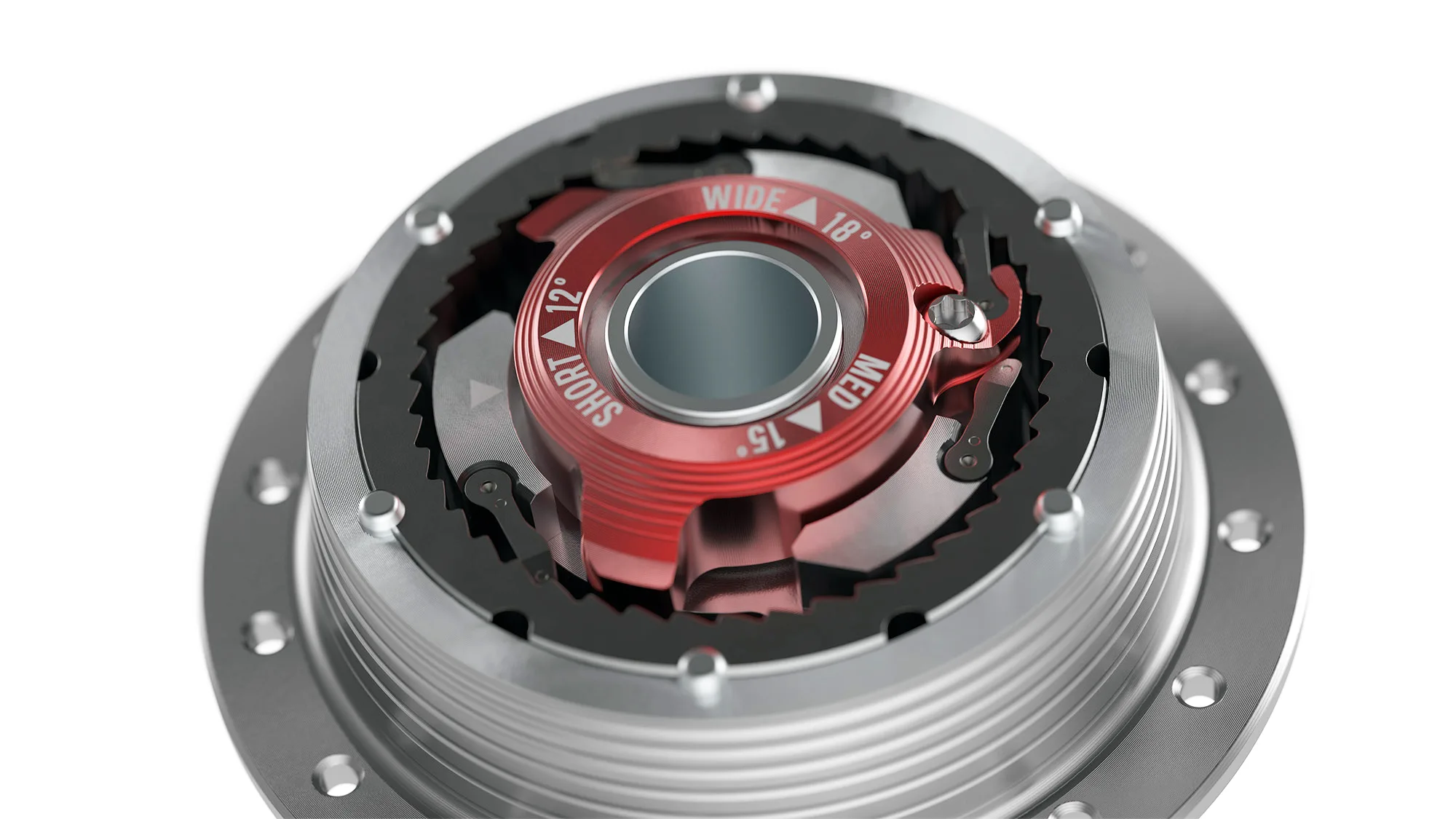A quick glance at the state of the mountain bike in 2024 will reveal a lot of high-pivot designs. One of the motivations for the latest crop of high-pivot bikes is their ability to mitigate chain growth and pedal kickback – but what if you didn’t need an entirely new frame design to do it? What if it was as simple as changing your hub?
That’s what the new e*thirteen Sidekick hub promises, well, that and more. By decoupling the drivetrain from the rear wheel when coasting, the Sidekick system claims to reduce drag, noise, and vibration while improving suspension performance by “eliminating pedal kickback in nearly all situations”.
Sounds good? Let’s dig in.
How Does Sidekick Work?
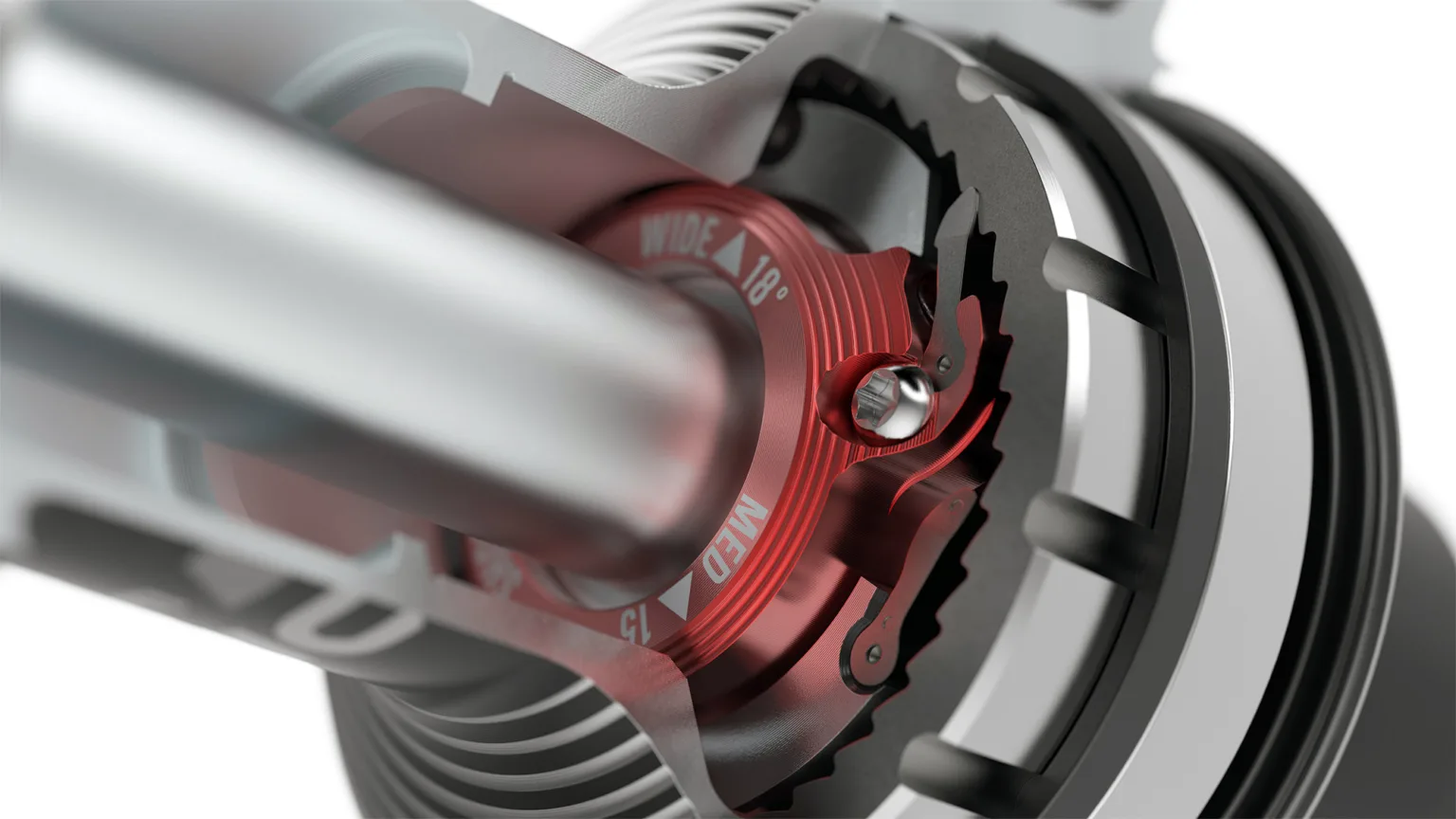
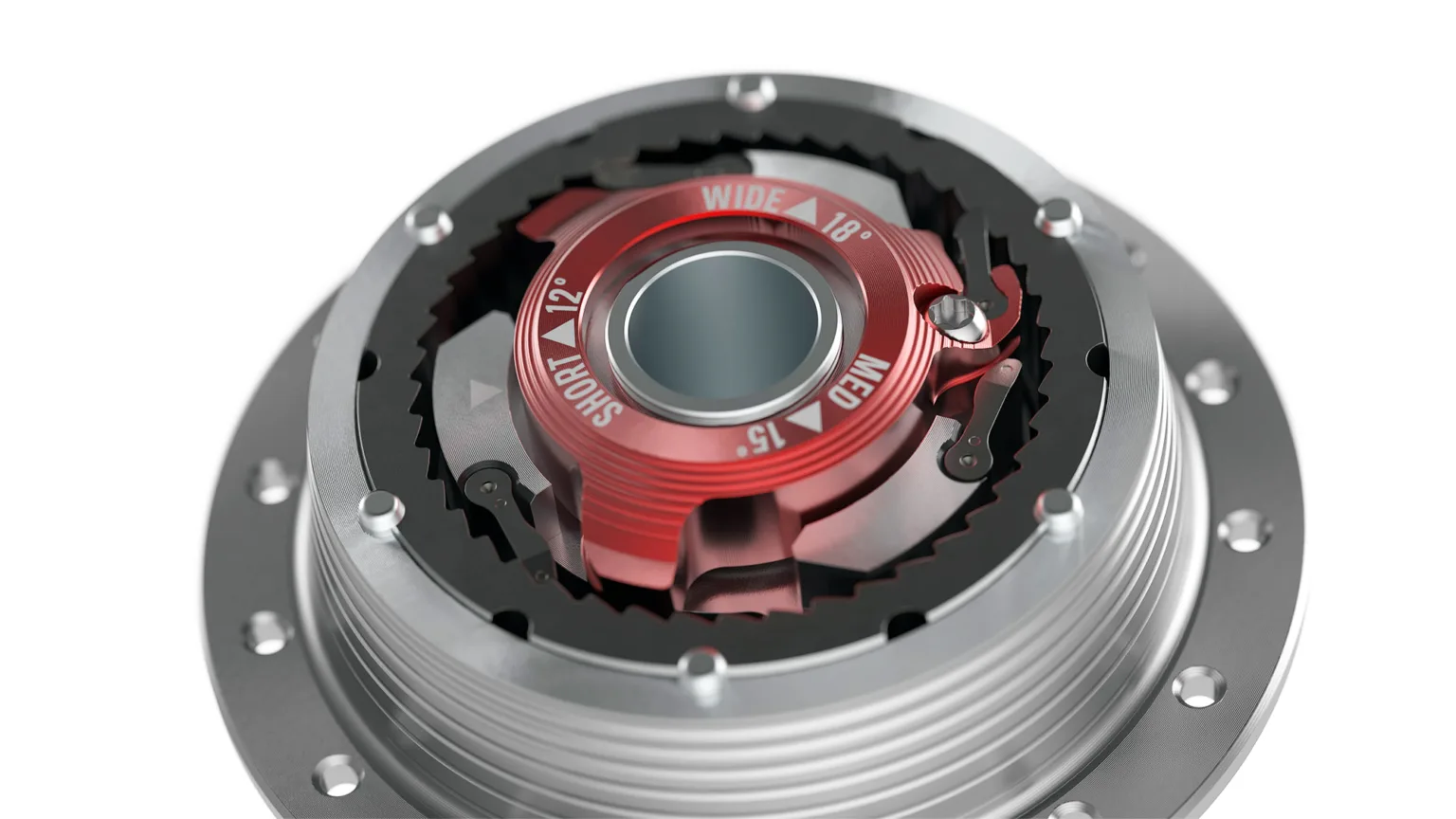
Sidekick starts with a proprietary freehub mechanism that contains an extra pawl. The pawl is on a ‘timed pusher’ which allows the drive pawls to retract from the ratchet ring when coasting. Essentially, the drive pawls can slide up and down ramps on the pusher a certain amount before sliding all the way up to engage the drive ring. But until the drive pawls engage the drive ring, the wheel is free to rotate, separated from the drivetrain.
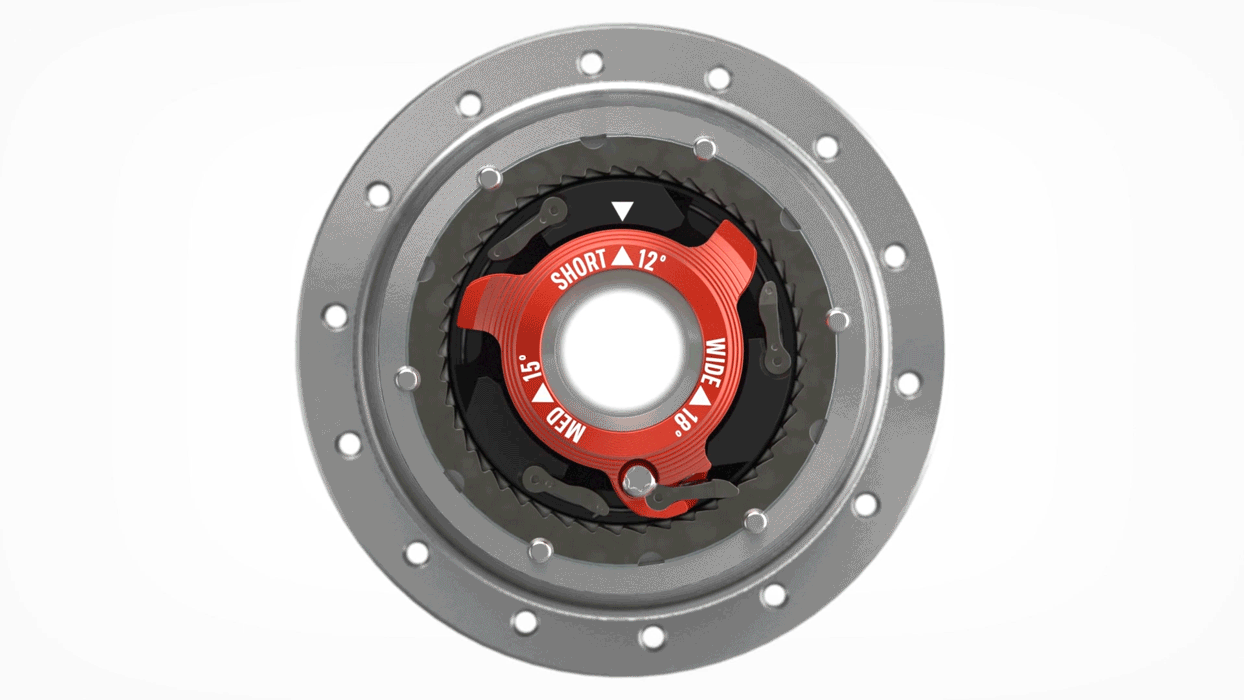
For the system to work, there has to be a deadband that allows the wheel to rotate before the pawls engage. Since not all riders and frames will need or want the same amount of deadband, it can be changed without tools from 12º to 15º or 18º.
Benefits
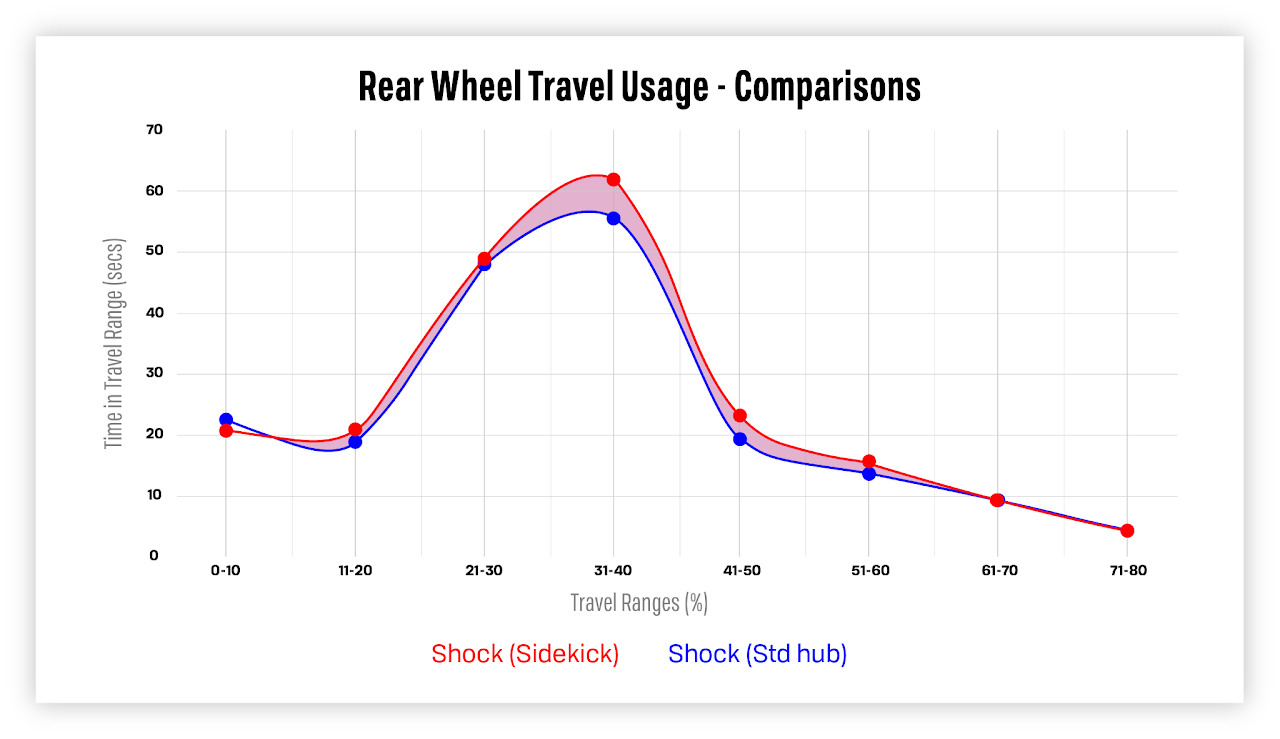
To validate the system, e*thirteen has done extensive testing with a team of extremely talented racers including Aaron Gwin, Rónán Dunne, Rémy Métailler, Fabien Barel, and more. Using a BYB telemetry system with a 1000Hz/sec sampling rate, e*thirteen found that the Sidekick allows riders to spend 7% more time in the mid-stroke of the suspension range (11-70%), while allowing 44% more (cumulative) use of the shock travel in that range.

Sidekick was also responsible for 20% less crank movement than a traditional hub, which is where the elimination of pedal kickback comes into play.
Claimed Rider Comfort & Speed Benefits
- Assists riders to maintain a neutral position on downhills
- Flat pedal riders will experience less kickback at the pedals, providing a planted feel with more comfort and control
- Eliminates drivetrain clatter and chain vibration when descending
- Allows for smoother and quieter shifting
- Whisper quiet when freewheeling
- Reduced drag equals free rolling speed
Claimed Suspension Performance Benefits
- Eliminates pedal kickback in nearly all situations, giving a “chainless” feel while descending
- No change is needed in rear shock compression and rebound tune
- Simplifies suspension setup window by allowing free suspension movement (no pedal kickback!)
- More active suspension while braking
- Spend up to 50% more time in the mid-stroke (sweet spot) of rear wheel travel giving the feeling of more available travel
How Does Sidekick Compare to Other Products like Ochain?
I asked this question to e*thirteen co-owner and engineer, Greg Thrash, since it seemed like two products with a very similar goal. According to Greg, “the most significant difference is how the two devices mitigate kickback… with Sidekick, the cassette has to rotate through the deadband before the ratchet can engage, so there is zero resistance to chain movement during that period. With O-chain, those movements are resisted by a spring. So fast, dramatic suspension events that feed tension into the chain don’t affect the suspension with Sidekick, whereas with O-chain, they may be blunted by the spring but are still present.
A secondary effect, but probably what you notice the most, is that the normal chain vibration and noise you perceive as you ride over rough surfaces just isn’t there since the cassette can rock on the axle freely both forward and backward without any intermittent ratchet engagements.
On top of that the hub is nearly silent. There is a single pawl in the system that makes it work, but it has a very light spring activating it, so you can’t hear it operating over the sound of your tires on the ground.
Between the super low drag pawl and your suspension working better, your bike seems to roll super fast, corners better, carries more speed; everything seems to work better.”
Who is Sidekick for?
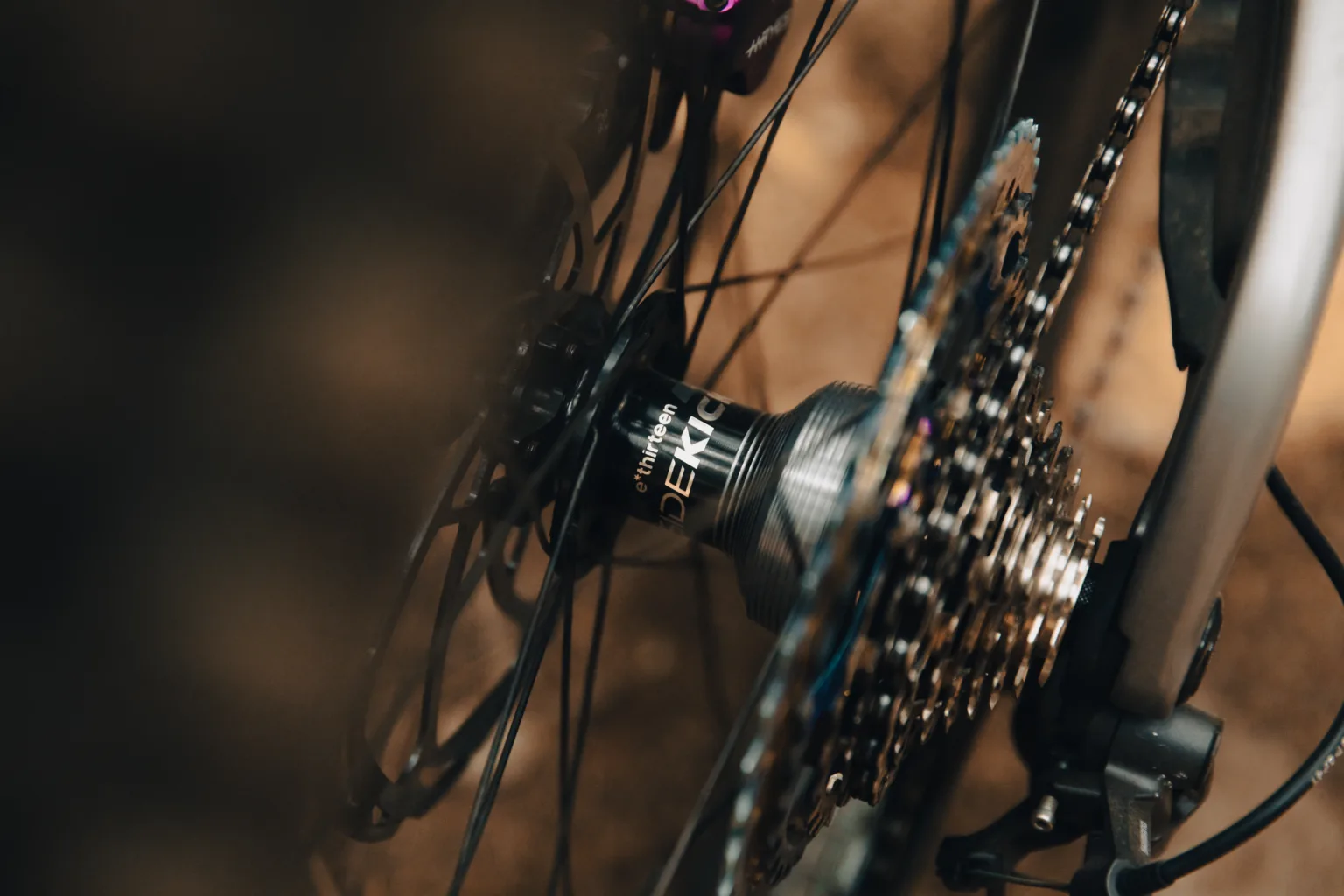
Many of those reasons are also why e*thirteen is marketing this to more than just downhill racers. Advertising it as beneficial for everything from aggressive short-travel trail bikes to full DH bikes, as well as Class 1 ebikes, the Sidekick system has benefits for a wide range of riders. Namely, improved suspension performance, lower drag, less noise, and reduced fatigue.
What About High Engagement Hubs?
It seems the bike industry has been pushing relentlessly toward higher and faster-engaging hubs. The Sidekick system seems to fly in the face of that, so what gives? According to e*thirteen, while those high-engagement hubs might help you out of a tight technical spot, they won’t improve suspension performance. In fact, they might hurt it stating, “while coasting at 15 mph (25 kph) a hub with 1-degree engagement can engage over 1000 times per second, leading to significant pedal kickback and poor suspension performance. A hub with 18-degree engagement in the same scenario can engage over 60 times per second, also resulting in a high likelihood of pedal kickback.”
Hub Construction
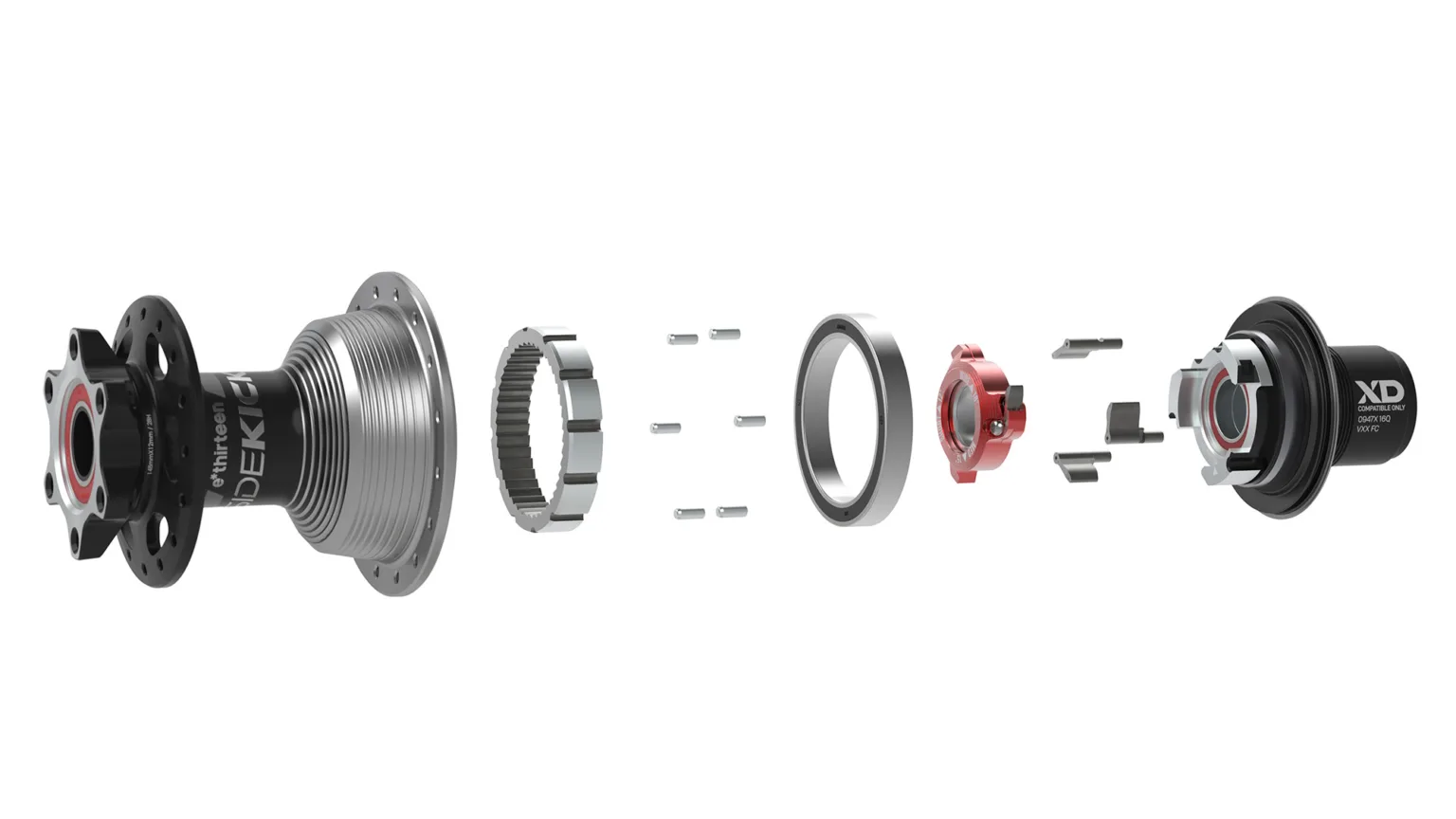
None of this matters if the hub isn’t up to the task, so e*thirteen spent a lot of time obsessing over the details to make Sidekick durable enough to stand up to the world’s top racers. A steel axle ensures the hub is stiff enough and strong enough for World Cup DH abuse, and a captive thread endcap system allows for tool-free cleaning and maintenance. The ratchet ring is replaceable along with all parts for serviceability.
At 452g for a Boost hub, the Sidekick hub is on the heavier side, but it’s likely less added weight than the extra chain and pulley to create a high-pivot frame design. J-Bend hubs will be available to build into your own wheelset, or e*thirteen will offer complete builds with their new Grappler Flux and Sylvan rims as well.
Hubs and wheelsets will be offered in all modern sizes and freehubs to fit most bikes and drivetrains.
Sidekick Hub Specs
- Driver: XD, Microspline, HG, mini-HG, 7-speed integrated cassette
- Size: Boost, Super Boost, 157x12mm, 148mm DH
- Axle Material: Steel
- Spoke count: Boost, Super Boost 28h, 32h / 157x12mm, 148mm DH 32H
- Spoke type: J-Bend
- Bearings: 6903 / 6808
- Engagement: 12° / 15° / 18° Adjustable Deadband
- Material: AL 6061-T6
- Weight: Boost (XD) 452g / Super Boost (XD) 450g / 157x12mm (7-speed) 652g / 148mm DH (mini-HG) 459g
- Color: Black/Sterling Silver
- MSRP: 499.95 $/€ (UK £469.95), 589.95 $/€ w 7-speed integrated cassette (UK £559.95)
New Rims and Wheels
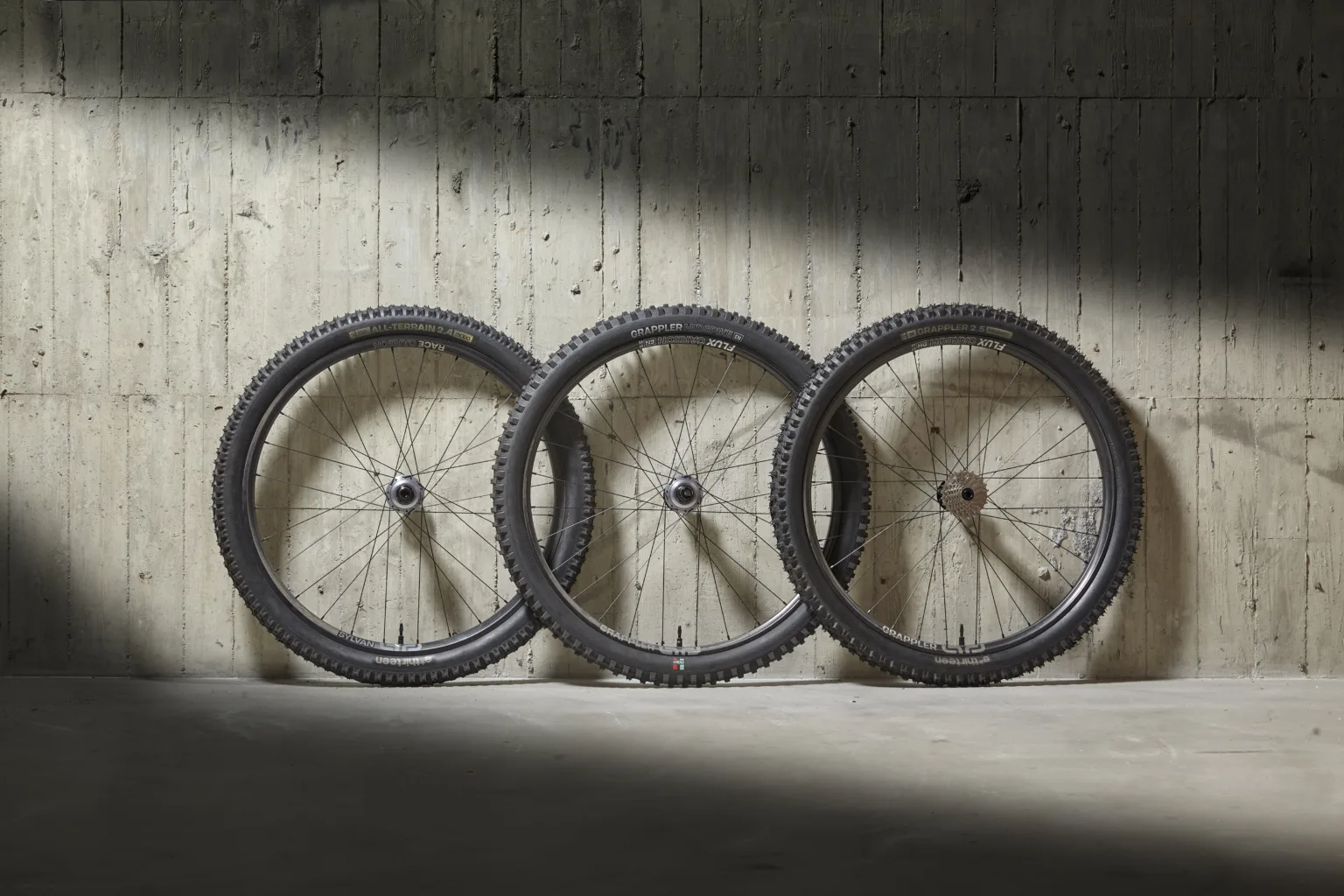
It wasn’t enough to just have a revolutionary new hub system, e*thirteen wanted to offer the whole package as well. That’s where the new Grappler Flux and Sylvan rims come in.
The Grappler Flux rims are designed for “huck-proof durability” while the Sylvan rims are designed for aggressive trail, All-Mountain, and light e-bikes.
Grappler Flux Rims and Wheels
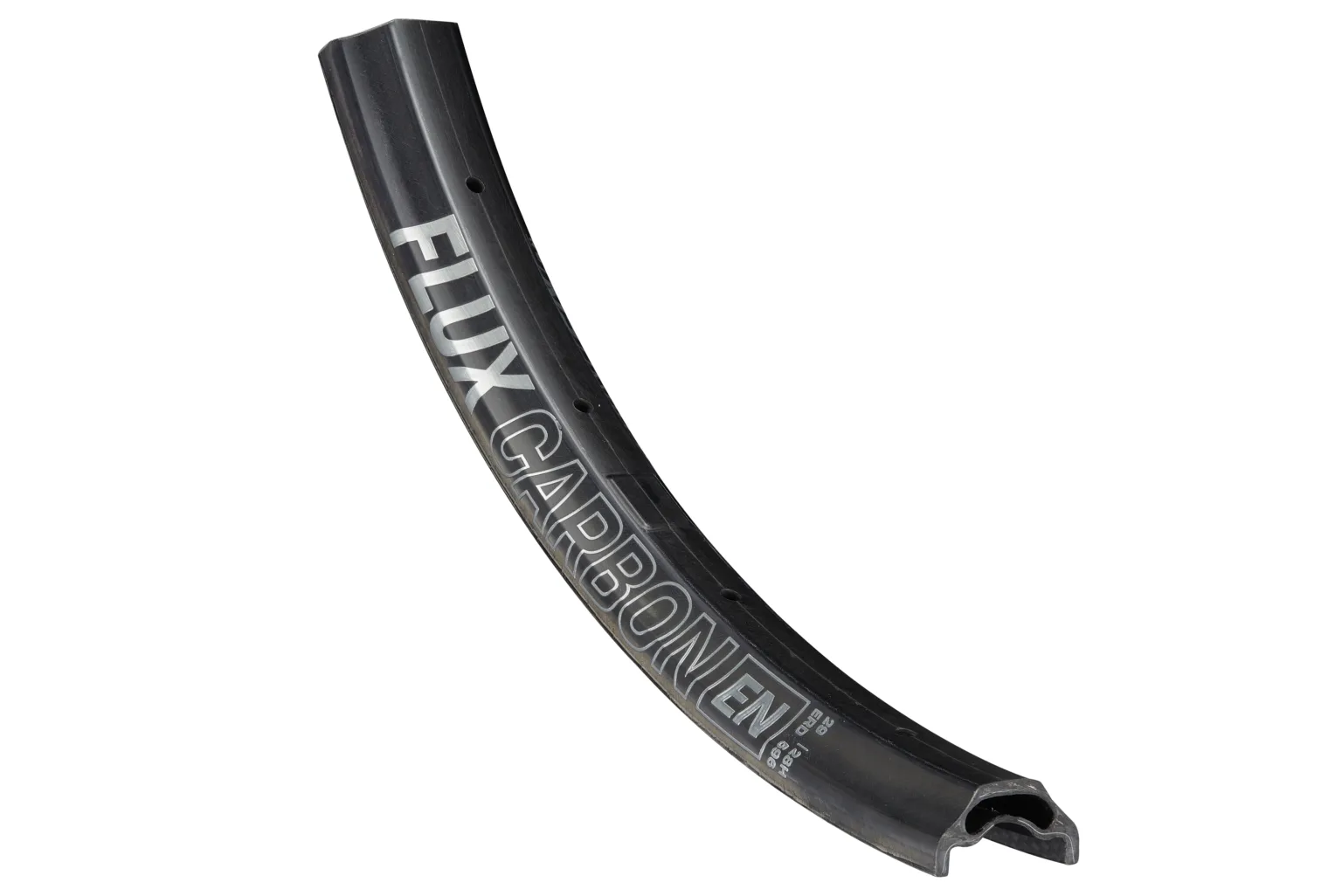
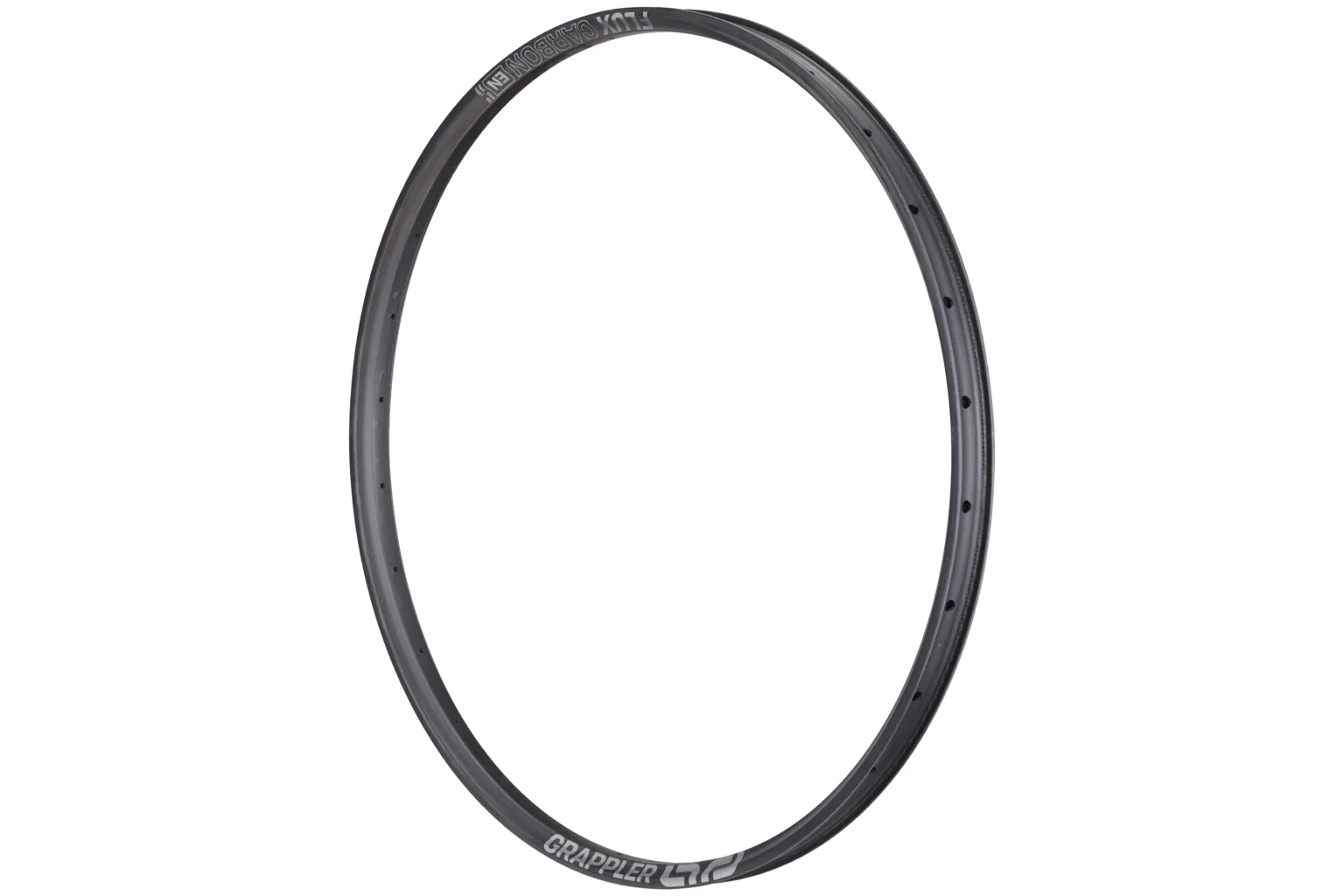
Grappler Flux Features
- Low-profile designs: 17.5mm height Enduro carbon, alloy, and DH alloy / 20mm height DH carbon
- 30mm Inner Width: Provides exceptional lateral stability while optimizing modern tire profiles
- Available in high-modulus carbon or welded 6069-AL constructions
- Optimized Carbon Layups: Specifically designed for DH and EN rims to balance durability, weight, and exceptional compliance
- Hookless Flanges: Offer set-and-forget tubeless security and resistance to impact damage
Grappler Flux Benefits
- Engineered compliance reduces impact forces and vibration, enhancing comfort and reducing rider fatigue
- Tuned compliance improves traction and tracking and reduces wheel deflection in rough terrain, without compromising a high-performance ride feel
- The same legendary toughness of our World Cup LG1 and Grappler rims
- Lifetime free replacement policy on carbon rims / 5-year crash replacement on alloy
- Suitable for both mountain and class-1 e-bike use
Grappler Flux Sidekick Enduro Wheel Tech
- Weight Carbon: Front 900g / Rear 1160g 27.5”, 1200g 29” (Boost, XD)
- Weight Aluminum: Front 906g / Rear 1187g 27.5”, 1206g 29” (Boost, XD)
- Spokes/Nipples: Sapim D-Light / Secure Lock Alloy / 28H/28H – F/R
- Rear Config: Sidekick Boost 148×12 / Super Boost 157×12 – Steel Axle
- Front Config: Sidekick Boost 110x15mm
- Driver: XD / Microspline (HG Avail.)
- Valves: Quick Fill Presta Tubeless Valves
- Sizes: 29” Front, Rear 27.5”/29”
- Grappler Sidekick Flux Carbon MSRP: Front 799.95 $/€ – Rear 1199.95 $/€ (UK F/R £729.95/£1099.95)
- Grappler Sidekick Flux Aluminum MSRP: Front 379.95 $/€ – Rear 649.95 $/€ (UK F/R £349.95/£589.95)
Grappler Flux Enduro Rim Tech
- Weight: Aluminum 587g-586g / Carbon 560g-580g (27.5”-29”)
- Wheel Size: 27.5” / 29”
- Inner Width: 30mm
- Spoke Count: 28H / 32H
- Valve Hole: Presta
- Joint: Aluminum-Welded
- Bead Type: Hookless
- Material: 6069-AL / High-Modulus Carbon
- MSRP: Aluminum 129.95 $/€ (UK £119.95)/ Carbon 539.95 $/€ (UK £489.95)
Grappler Flux DH Wheel Tech
- Weight Carbon: Front 1000g / Rear 1170g 27.5”, 1210g 29” (157×12, mini-HG) / 7-speed cassette +180g
- Weight Aluminum: Front 1009g / Rear 1177g 27.5”, 1219g 29” (157×12, mini-HG) / 7-speed cassette +180g
- Spokes/Nipples: Sapim D-Light / Secure Lock Alloy / 28H F, 32H R
- Rear Config: Sidekick 157x12mm / 148mm DH – Steel Axle
- Front Config: Sidekick Boost 110x20mm
- Driver: 7-speed Integrated Cassette / mini-HG
- Valves: Quick Fill Presta Tubeless Valves
- Sizes: 29” Front, Rear 27.5”/29”
- Grappler Sidekick Flux Carbon MSRP: Front 849.95 $/€ – Rear 1349.95-1499.95 $/€ (UK F/R £769.95/£1249.95-£1389.95)
- Grappler Sidekick Flux Aluminum MSRP: Front 379.95 $/€ – Rear 659.95-799.95 $/€ (UK F/R £349.95 / £599.95-£699.95)
Grappler Flux DH Rim Tech
- Weight: Aluminum 587g-609g / Carbon 580g-600g (27.5”-29”)
- Wheel Size: 27.5” / 29”
- Inner Width: 30mm
- Spoke Count: 28H / 32H
- Valve Hole: Presta
- Joint: Aluminum-Welded
- Bead Type: Hookless
- Material: 6069-AL / High-Modulus Carbon
- MSRP: Aluminum 129.95 $/€ (UK £119.95) / Carbon 569.95 $/€ (UK £519.95)
Sylvan Race Rims and Wheels

Sylvan Race Carbon Rims
- Constructed from high-modulus carbon fiber with a 23mm profile height and a decade-honed custom layup
- Include a clever valve dock for improved tubeless sealing on asymmetric rims
- Weighing just 450g (29”), impact strength was tested at 7x previous TRS race carbon rims
- Backed by a lifetime free rim replacement warranty
Sylvan Race Alloy Rims
- 6069-AL construction, featuring welded joints and angle-drilled spoke holes
- Low profile 20mm sectional height for exceptional compliance
- Weighing in at 567g (29”), they show nearly a 4x improvement in impact strength over former TRS Plus rims
- Dramatically improve ride feel and control
- Backed by a 5-year crash replacement policy
Sylvan Sidekick Wheel Tech
- Weight Carbon (29”): 800g/1060g (Boost, XD Driver)
- Weight Alloy (29”): 920g / 1180g F/R (Boost, XD Driver)
- Spokes: Sapim D-Light 28H/28H – F/R
- Rear Config: Sidekick 148×12 Boost or 157×12 Super Boost – Steel Axle
- Front Config: Sidekick SL 110×15 Boost
- Driver: XD / Microspline (HG Avail.)
- Valves: Quick Fill Presta Tubeless Valves
- Sizes: 29” Front – 27.5”/29” Rear
- MSRP Carbon: Front 779.95 $/€ (UK £709.95) – Rear 1119.95 $/€ (UK £1019.95
- MSRP Aluminum:: Front 379.95 $/€ (UK £349.95) – Rear 629.95 $/€ (UK £569.95)
